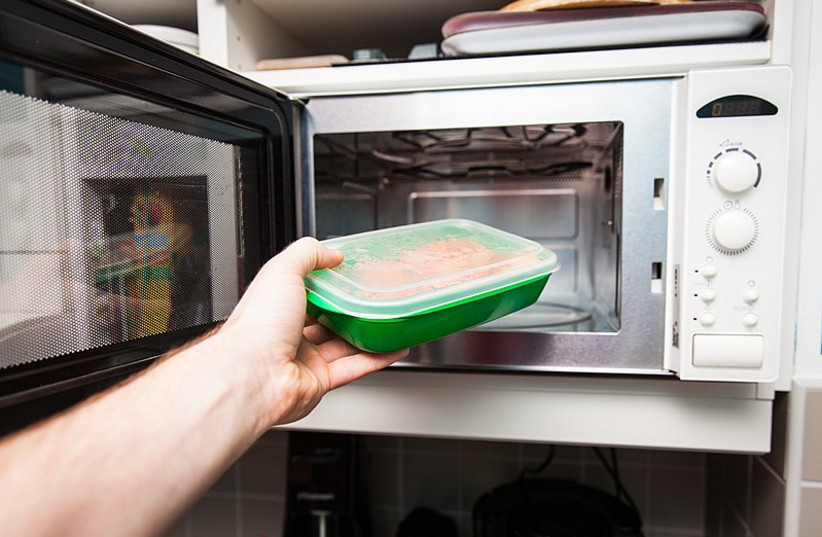Microwaving your baby's bottle may be exposing them to high levels of harmful micro- and nanoplastics, according to a new study.
The peer-reviewed study, published in the journal Environmental Science & Technology, examined how baby food containers release micro- and nanoplastics under different conditions and the possible health effects of such plastic particles.
Researchers from the University of Nebraska–Lincoln conducted the experiment by observing water and an acid, simulating acidic food in two brands of polypropylene plastic baby food containers, as well as a polyethylene-based baby food pouch under cold, room temperature, and hot conditions in a microwave.
While the two containers released more micro- and nanoplastics under hotter temperatures, the pouch released more plastic particles under room temperature than under high temperatures.
The researchers noted that a variety of different factors can affect the breakdown of plastics, including pH, temperature, material type, and oxygen, and that further research is still needed to understand how plastic particles are released.

Based on a model that considered particle release, body weight, and per-capita ingestion of various food and drink, the researchers estimated that infants drinking microwaved water and toddlers eating microwaved dairy products were most likely to intake the greatest relative concentrations of plastic particles.
“It is really important to know how many micro- and nano plastics we are taking in,” said Kazi Albab Hussain, the study’s lead author and a doctoral student in civil and environmental engineering at the University of Nebraska–Lincoln, in a press release. “When we eat specific foods, we are generally informed or have an idea about their caloric content, sugar levels, other nutrients. I believe it’s equally important that we are aware of the number of plastic particles present in our food.
“Just as we understand the impact of calories and nutrients on our health, knowing the extent of plastic particle ingestion is crucial in understanding the potential harm they may cause. Many studies, including ours, are demonstrating that the toxicity of micro- and nano plastics is highly linked to the level of exposure."
Plastic particles kill off large amounts of kidney cells
The team also cultured and exposed embryonic kidney cells to the plastic particles released from the containers, finding that after just two days, 77% of the kidney cells exposed to the highest concentrations of plastic particles observed were killed off.
The researchers believe that kidney cells might be more susceptible to plastic particles than other cell types examined in prior research and that previous studies observed less damage because they used larger particles, meaning smaller particles may still be able to cause harm.
Further research on how exactly plastic particles interact with human cells is still needed in order to fully determine the health risks of plastic particles.
“We need to find the polymers which release fewer (particles),” said Hussain. “Probably, researchers will be able to develop plastics that do not release any micro- or nano plastics — or, if they do, the release would be negligible."
